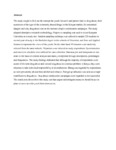| dc.description.abstract | The study sought to find out the concept the youth, lecturers and parents had on drug abuse, their awareness of the type of the commonly abused drugs on the Kenyan market, the associated dangers and why drug abuse was on the increase despite sensitization campaigns. The study adopted descriptive research methodology. Purposive sampling was used to select Kenyatta University as a study site. Random sampling technique was utilized to sample 226 students in second year of study in the Bachelor degree in the schools of Education, and Pure and Applied Science to represent the views of the youth. On the other hand 49 lecturers were randomly selected from the same schools. 50 parents were selected as study respondents. Questionnaires and interview schedules were utilized for data collection. Data analysis and interpretation was done on the basis of content analysis and mainly interpreted through descriptions, percentages and frequencies. The study findings indicated that although the majority of respondents were aware of the term drug abuse and viewed drug abuse as a serious problem in Kenya, they were reluctant to take individual responsibility in its eradication. Bhang was regarded by respondents, as more prevalently abused than alcohol and tobacco. Peer group influence was seen as a major contributor to drug abuse. Drug abuse sensitization campaigns were regarded as not successful. The conclusion drawn from this study was that urgent and stringent measures should be put in place so as to save the youth from destruction. | en_US |

